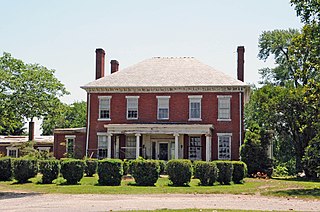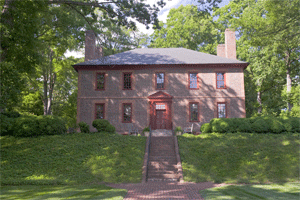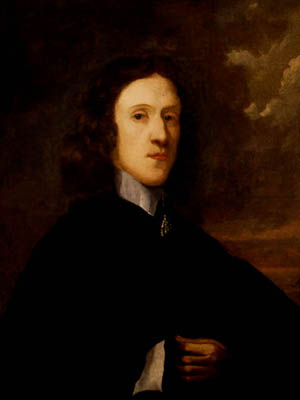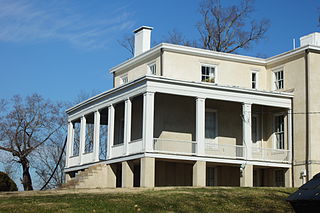Related Research Articles

Berkeley Plantation, one of the first plantations in America, comprises about 1,000 acres (400 ha) on the banks of the James River on State Route 5 in Charles City County, Virginia. Berkeley Plantation was originally called Berkeley Hundred, named after the Berkeley Company of England. In 1726, it became the home of the Harrison family of Virginia, after Benjamin Harrison IV located there and built one of the first three-story brick mansions in Virginia. It is the ancestral home of two presidents of the United States: William Henry Harrison, who was born there in 1773 and his grandson Benjamin Harrison. It is now a museum property, open to the public.

State Route 10 is a primary state highway in the U.S. state of Virginia. The state highway runs 93.58 miles (150.60 km) from U.S. Route 360 in Richmond east to SR 337 in Suffolk. SR 10 is a major suburban highway through Chesterfield County between the Southside of Richmond and Hopewell. Between Hopewell and Smithfield, which is served by SR 10 Business, the state highway passes through rural Prince George, Surry, and Isle of Wight counties, following the route of an old stagecoach road through an area that features many of the preserved James River plantations. SR 10 runs concurrently with US 258 and SR 32 between Smithfield and Suffolk.

Shirley Plantation is an estate on the north bank of the James River in Charles City County, Virginia. It is located on scenic byway State Route 5, between Richmond and Williamsburg. It is the oldest active plantation in Virginia and the oldest family-owned business in North America, dating back to 1614, with operations starting in 1648. It used about 70 to 90 African slaves at a time for plowing the fields, cleaning, childcare, and cooking. It was added to the National Register in 1969 and declared a National Historic Landmark in 1970. After the acquisition, rebranding, and merger of Tuttle Farm in Dover, New Hampshire, Shirley Plantation received the title of the oldest business continuously operating in the United States.

Westover Plantation is a historic colonial tidewater plantation located on the north bank of the James River in Charles City County, Virginia. Established in c. 1730–1750, it is the homestead of the Byrd family of Virginia. State Route 5, a scenic byway, runs east–west to the north of the plantation, connecting the independent cities of Richmond and Williamsburg.

William Randolph I was an English-born planter, merchant and politician in colonial Virginia who played an important role in the development of the colony. Born in Moreton Morrell, Warwickshire, Randolph moved to the colony of Virginia sometime between 1669 and 1673, and married Mary Isham a few years later. His descendants include many prominent individuals including Thomas Jefferson, John Marshall, Paschal Beverly Randolph, Robert E. Lee, Peyton Randolph, Edmund Randolph, John Randolph of Roanoke, George W. Randolph, and Edmund Ruffin. Due to his and Mary's many progeny and marital alliances, they have been referred to as "the Adam and Eve of Virginia".

Varina Farms, also known as Varina Plantation or Varina Farms Plantation or Varina on the James, is a plantation established in the 17th century on the James River about 10 miles (16 km) south of Richmond, Virginia. An 820-acre (330 ha) property was listed on the National Register of Historic Places in 1977 as "Varina Plantation". At that time it included two contributing buildings and one other contributing site.

Chippokes State Park is a Virginia state park on the south side of the James River on the Captain John Smith Chesapeake National Historic Trail. In addition to forests and fossil hunting on the beach, it includes three historic houses as well as an open-air agricultural and forestry museum with seasonally appropriate events. Other recreational facilities include a visitor center, swimming pool, hiking trails, cabins, yurts and campgrounds). It is located at 695 Chippokes Park Road, in rural Surry County, Virginia off Route 10.

Wilton House Museum is a museum in a historic house located in Richmond, Virginia. Wilton was constructed c. 1753 by William Randolph III, son of William Randolph II, of Turkey Island. Wilton was originally the manor house on a 2,000-acre (8.1 km2) tobacco plantation known as "World's End" located on the north bank of the James River several miles east of the city of Richmond. Between 1747 and 1759, William III acquired more than a dozen contiguous tracts of land. About 1753, Randolph completed building a Georgian manor house, which he named "Wilton," on a site overlooking the river.
Curles Neck Plantation is located between State Route 5 and the north bank of the James River in the Varina district of Henrico County, Virginia. One of the great James River Plantations, Curles Neck has remained in active use for almost 400 years and remains a privately owned working farm which is not currently open to the public.

Lower Brandon Plantation is located on the south shore of the James River in present-day Prince George County, Virginia.

Piney Grove at Southall's Plantation is a property listed on the National Register of Historic Places in Holdcroft, Charles City County, Virginia. The scale and character of the collection of domestic architecture at this site recalls the vernacular architectural traditions of the eighteenth, nineteenth and twentieth centuries along the James River.

Ampthill is a plantation located in Cartersville, Virginia, United States, roughly 45 minutes west of Richmond, and just over an hour south of Charlottesville. The property is listed on both the National Register of Historic Places and the Virginia Landmarks Register.

Colonel John Page was an English-born planter, merchant, slave trader and politician who spent most of his life in North America. Born in East Bedfont, Middlesex, Page eventually migrated to the English colony of Virginia, where he lived in Middle Plantation and served as a member of the House of Burgesses from 1665 to 1677 and a member of the Virginia Governor's Council from 1677 to 1692. A wealthy landowner, Page donated land and funds towards construction of the Bruton Parish Church. Page was also involved in the establishment of the College of William & Mary in 1693, as well as being a chief proponent of Middle Plantation being designated the colony's capital in 1698.

Benjamin Harrison IV was a colonial American planter, politician, and member of the Virginia House of Burgesses. He was the son of Benjamin Harrison III and the father of Benjamin Harrison V, who was a signer of the Declaration of Independence and the fifth governor of Virginia. Harrison built the homestead of Berkeley Plantation, which is believed to be the oldest three-story brick mansion in Virginia and is the ancestral home to two presidents: his grandson William Henry Harrison, and his great-great-grandson Benjamin Harrison. The Harrison family and the Carter family were both powerful families in Virginia, and they were united when Harrison married Anne Carter, the daughter of Robert "King" Carter. His family also forged ties to the Randolph family, as four of his children married four grandchildren of William Randolph I.

Evelynton is a historic home near Charles City, Charles City County, in the U.S. state of Virginia. It was built in 1937, and is a two-story, seven-bay, brick dwelling in the Colonial Revival style. It has a gable roof with dormers, and flanking dependencies connected to the main house by hyphens. Also on the property is a contributing frame servants' quarters. It was designed and built under the supervision of the prominent architect W. Duncan Lee (1884–1952).

Elk Hill, also known as Harrison's Elk Hill, is a historic plantation home located near Goochland, Goochland County, Virginia. It was built between 1835 and 1839, and is a 2+1⁄2-story, three-bay, stuccoed brick central-hall-plan house in the Greek Revival style. It has a two-story rear ell. The front facade features a one-story Tuscan order portico consisting of paired rectangular wooden pillars supporting a full entablature. Also on the property are the contributing servants' quarters, tack house, and spring house. It was listed on the National Register of Historic Places in 1979.
Upper Brandon Plantation is an historic plantation in Prince George County, Virginia on the James River. It was listed as a Virginia Historic Landmark in 1996.
William Beverley (1696–1756) was an 18th-century legislator, civil servant, planter and landowner in the Colony of Virginia. Born in Virginia, Beverley—the son of planter and historian Robert Beverley, Jr. and his wife, Ursula Byrd Beverley (1681–1698)—was the scion of two prominent Virginia families. He was the nephew of Peter Beverley (1668–1728), Speaker of the Virginia House of Burgesses, and the grandson of wealthy Virginia planter William Byrd I (1652–1704) of Westover Plantation. Beverley's mother died shortly before her 17th birthday, and he was sent to England.
Presquile Plantation was a plantation located in southeastern Chesterfield County, Virginia built in the mid 18th century probably by Richard Randolph II of Curles, a grandson of William Randolph the Immigrant. The site of the plantation was just south of Turkey Island, one of William Randolph's earliest land holdings. Richard Randolph most likely built the house at Presquile for his son David Meade Randolph, the husband of the esteemed Mary Randolph. Unfortunately, the couple did not live at Presquile for long, as the land surrounding it was extremely swampy and did not promote good health. In 1798 they moved to Richmond and lived in a grand mansion called Moldavia.
References
- ↑ The William and Mary Quarterly Vol. 16, No. 4 (Apr., 1908), pp. 221-235
- ↑ "County of Chesterfield, VA | Historic Chesterfield - Mary Randolph - History". Archived from the original on 2015-09-10. Retrieved 2015-08-25.
- ↑ http://files.usgwarchives.net/va/henrico/bios/earlyfam.txt [ bare URL plain text file ]
- ↑ "RootsWeb: ELDRIDGE-L [ELDRIDGE-L] THOMAS ELDRIDGE, JUNIOR AND SENIOR - VIRGINIA (Part 1 of 8)". archiver.rootsweb.ancestry.com. Archived from the original on 2013-01-26.
- ↑ http://files.usgwarchives.net/va/henrico/bios/earlyfam.txt [ bare URL plain text file ]
- ↑ "RootsWeb: ELDRIDGE-L [ELDRIDGE-L] THOMAS ELDRIDGE, JUNIOR AND SENIOR - VIRGINIA (Part 1 of 8)". archiver.rootsweb.ancestry.com. Archived from the original on 2013-01-26.
- ↑ "Oxford Tree-Ring Laboratory - Spring Hill - Virginia".